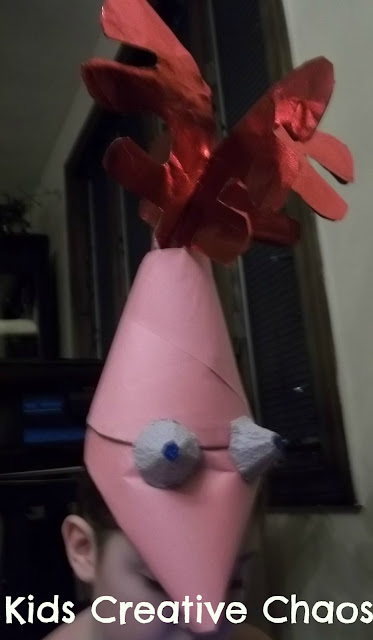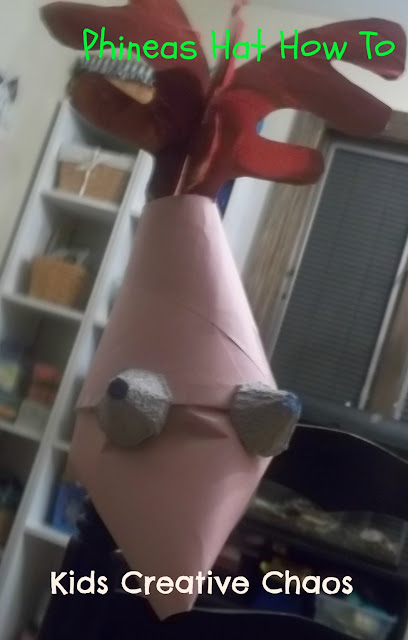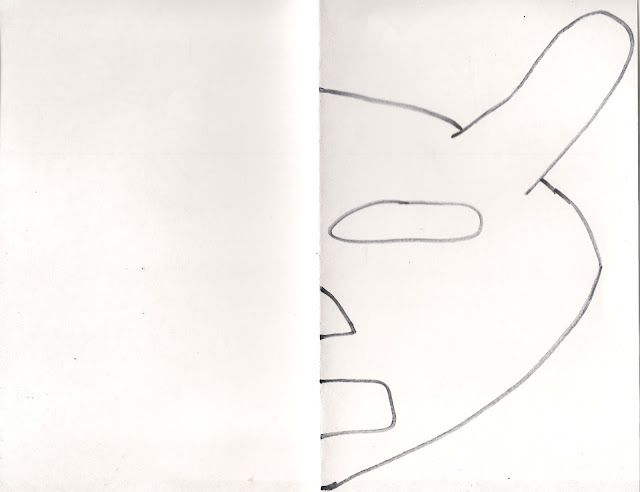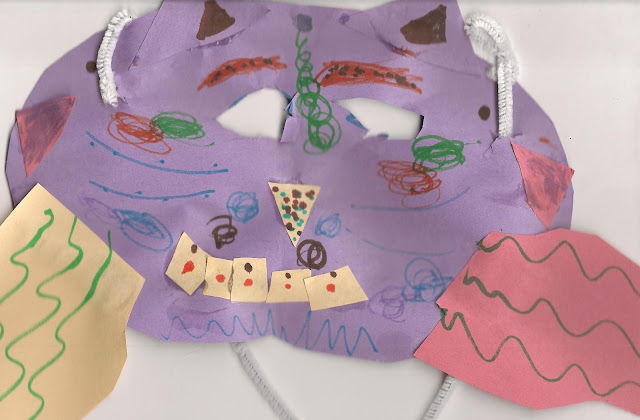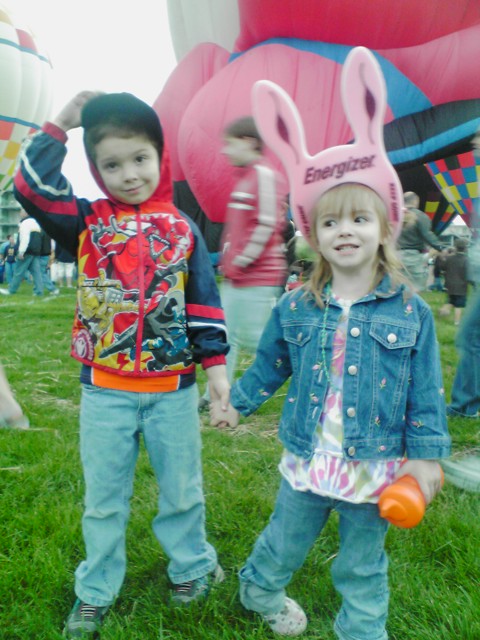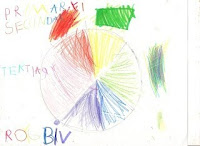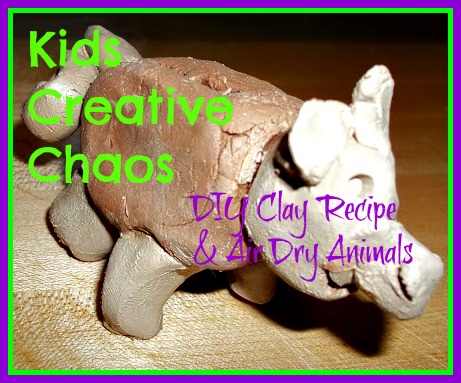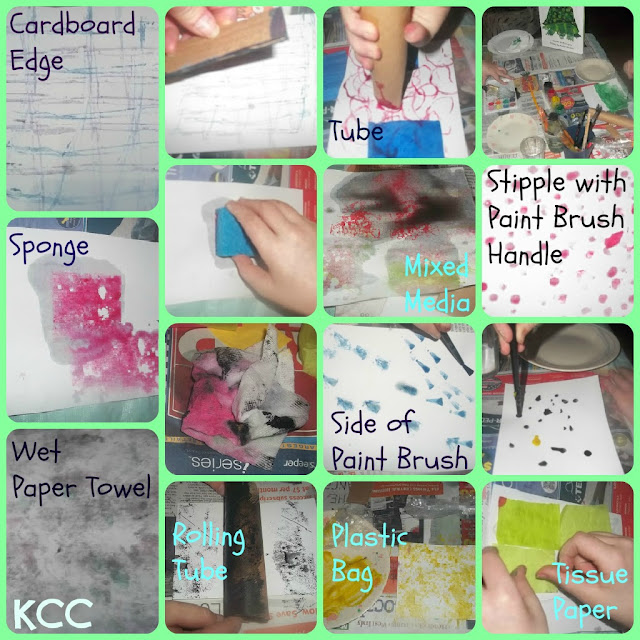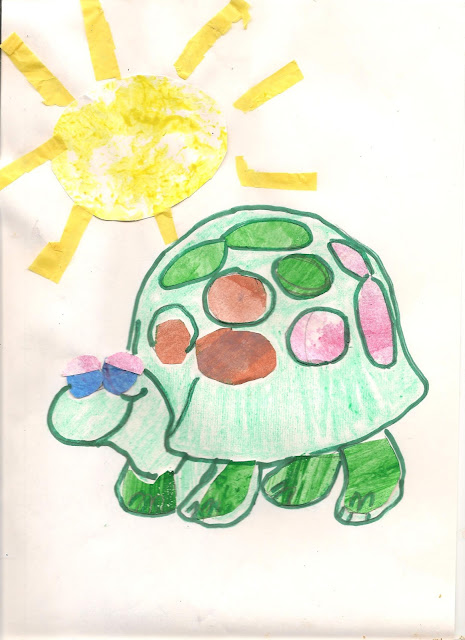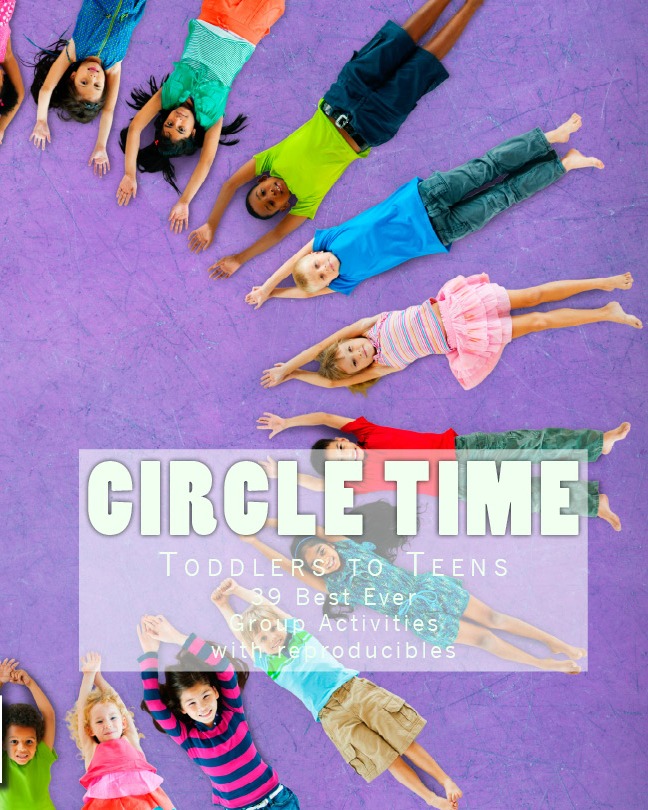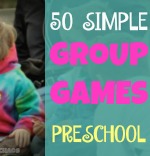Make a Chicken or Rooster quilt square pattern with construction paper
We are officially chicken farmers! So, in this edition of Jake's Journey in Art we incorporated our Silver Wyandotte Chicks into the homeschool art project.
This paper craft is a pattern for an 8 x 8 quilt square. The assignment was to design a quilting pattern with shapes, colors, and a nice layout picturing a favorite activity. These squares depict egg collecting. You can cut simple shapes like these for your preschoolers or early elementary students and see what they create. Cartoon Chicken
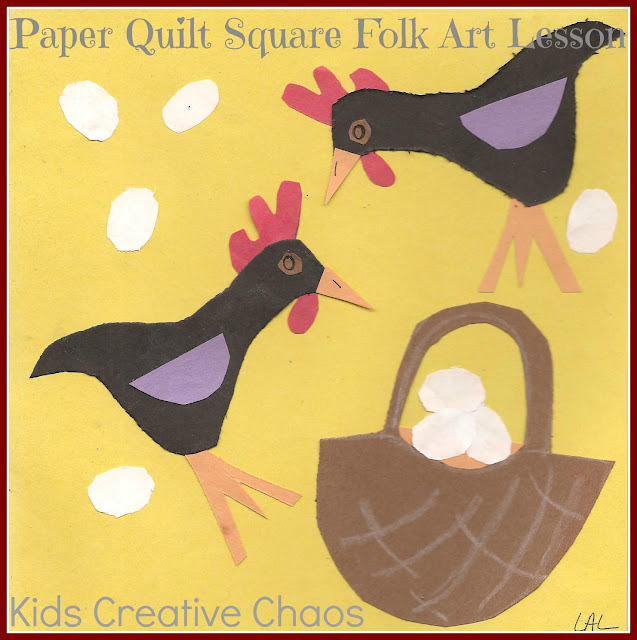 |
| Construction paper quilt square patterns. |
When a bunch of people get together to make a quilt it is called a quilting bee. Quilts have been an important part of history. One of my favorite books is by Faith Ringgold, "Aunt Harriet's Underground Railroad in the Sky". The illustrations in the book are picture perfect for quilting. Quilts were sometimes used as welcome flags for runaway slaves. Many quilts depict important events.
| Books about quilting. |
So, finally getting chicks is a very important event in our family. Each of us chose a different color for the background and then coordinated the other background colors into our design. If the daddy had made one, we'd have a perfectly symmetrical mini paper quilt to hang on the wall. Since he didn't, we're going to put our quilt squares in frames and hang them vertically near our front door.
 |
| Gold and Silver Laced Wyandotte Chicks at 6 days old. |
 |
| Paper folkart quilt square ideas. |
Jake's quilt square is pictured above. He loves our chicks, but he is not a fan of art. However, he sat down with us and happily arranged the pieces on his background. Mommy cut out all of the shapes before we got started. This helped to set Jake's mind at ease. Of course, as usual, he complained everyone else's project was much better than his. I quickly explained American Folk Art was done by regular people without any training or even skill in some cases. Even so, it is sought after today and often sold for thousands of dollars. Probably, because it depicts their heart and home.
I like how his chicken is laying a pile of eggs, it has two visible feet, and the basket is full of eggs. I love that he enjoyed making this project, and he was happy to know they'll be on display in our dining room.
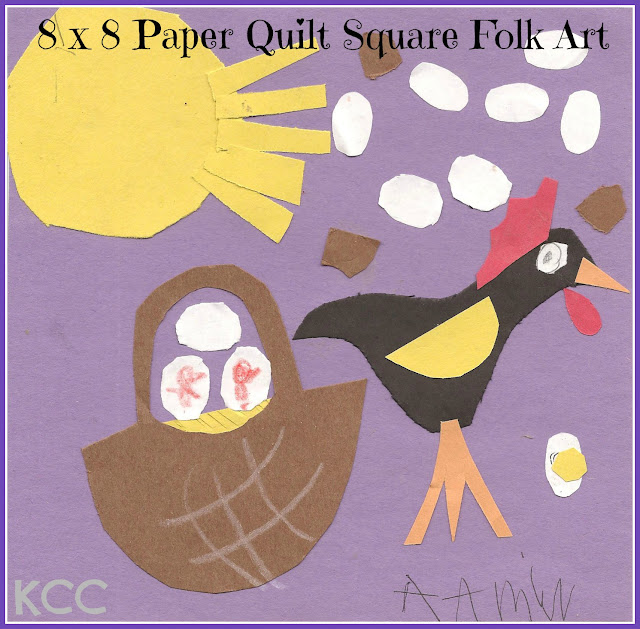 |
| Crafty First Grade Art Project: Make your own quilt square paper craft. |
Recommended Reading:
7 Fun and Easy Projects Quilts for Kids by Kids Tips for Quilting with Children
Sign up for our free newsletter!

